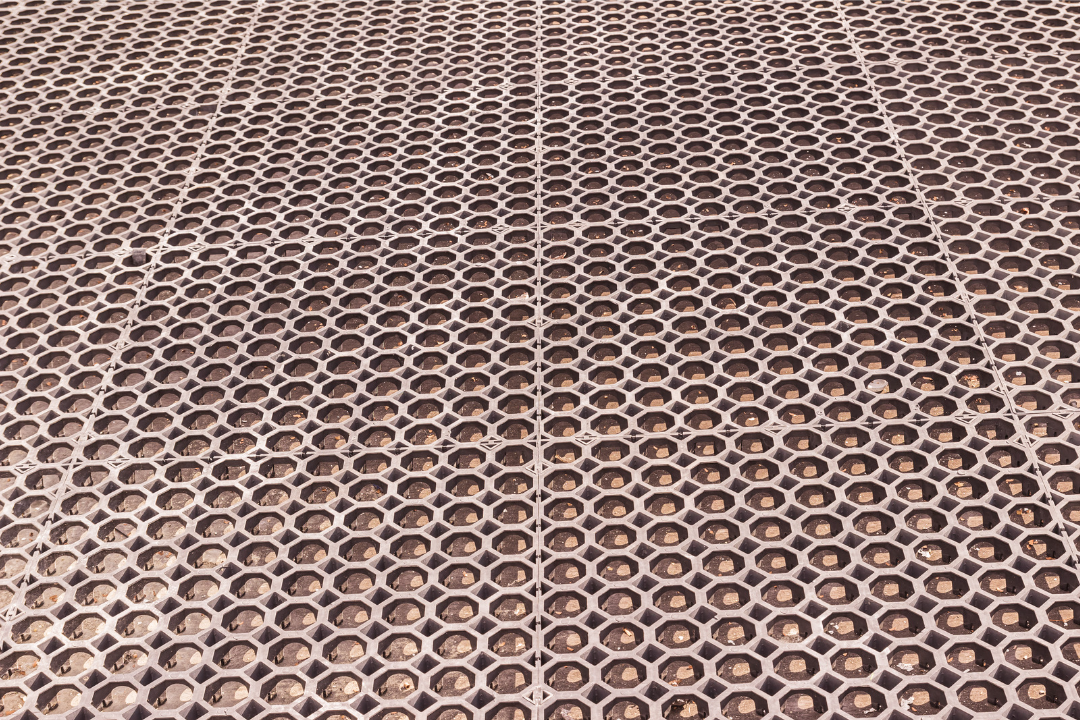One of the main principles of green building in the construction and design process is reducing water discharge directly into city channels (water runoff). By reducing the water load to the city’s drains, buildings can contribute to reducing the risk of flooding in the city.
One technology that can support this is the use of drainage cells. What is it and how does it work in water conservation efforts?
What does a drainage cell look like?

A drainage cell is a collection of block networks made of environmentally friendly materials, namely polypropylene plastic from the recycling process. This material is environmentally friendly, elastic, strong, and has large pores to facilitate the flow of water from top to bottom.
Drainage cells also function as containers so that water goes underground first before heading to the city sewer. Besides being useful for preventing waterlogging, this tool can also be a medium for storing water underground.
Uses of drainage cells
Installing drainage cells will provide many benefits for office building. Here are some of them.
1. Absorbs excess water
Drainage cells can be used on the roof of a functional building. These plastic blocks are very useful for absorbing excess water as an additional source of water for residents. Not only that, plants on the roof can develop better without cracks or leaks in their
storage medium.
2. Prevent cracks in concrete
Because drainage cells are able to store excess water, it can maintain building temperature with more energy-efficient methods. Why is that? Because concrete which is commonly used as a construction material easily expands into cracks when exposed to heat. So, with an additional water source, the temperature of the concrete will be maintained to prevent cracks that adversely affect the sturdiness of the building.
3. Maintain moisture
Green buildings made of environmentally friendly materials require extra care so that they are not damaged by certain fungi and bacteria. However, the existence of drainage cells will facilitate the treatment process because the absorbed water is able to maintain the humidity of the building. Thus, the growth of moss and bacteria that are harmful to buildings as well as residents can be prevented.
Advantages of drainage cells
Here are the benefits that will be worth your expenses.
1. Easy to install anywhere
In general, drainage cells can be arranged with any configuration, both horizontally and vertically. The reason is, the plastic block network can be separated and combined to adjust to a certain area. So, it can be installed anywhere, both on the roof of the building and the drain.
2. Powerful and large capacity
Although made of lightweight recycled plastic, drainage cells have a sturdiness that cannot be underestimated. This plastic is not prone to cracking or leaking when collecting additional water from external sources. Practically again, the absorption gap of drainage cell networks can also store a fair amount of water, especially if you want to recycle the additional water source to save its use in the building.
3. Immune to fungi and bacteria
Preventing fungal and bacterial contamination of water stored in a building is one of the mandatory agendas for green buildings. It is worth knowing that some species of mushrooms and bacteria are very dangerous to humans, so it is healthier for the occupants of the building. Drainage cells will prevent contamination of these two microorganisms because they cannot stick to polypropylene plastic.
4. Made of environmentally friendly materials
Making drainage cells only involves plastics that are light and strong. However, the plastic used is a type of polypropylene from recycled products. That way, it is safe for the environment, because of the absorption network material. In addition, this type of plastic is also easily recycled to reduce the amount of waste.
According to data from the United Nations, the average per capita water consumption in Indonesia reaches 2,332 liters every day. The number of its use will increase if multiplied by the total population of Indonesia which is already in the range of 260 million people.
By considering all these factors, drainage cells are very beneficial for green buildings because they can reduce the city’s water load. In addition, this technology is also useful for obtaining extra water sources naturally, so that the need for water remains fulfilled without exceeding reasonable consumption limits.


